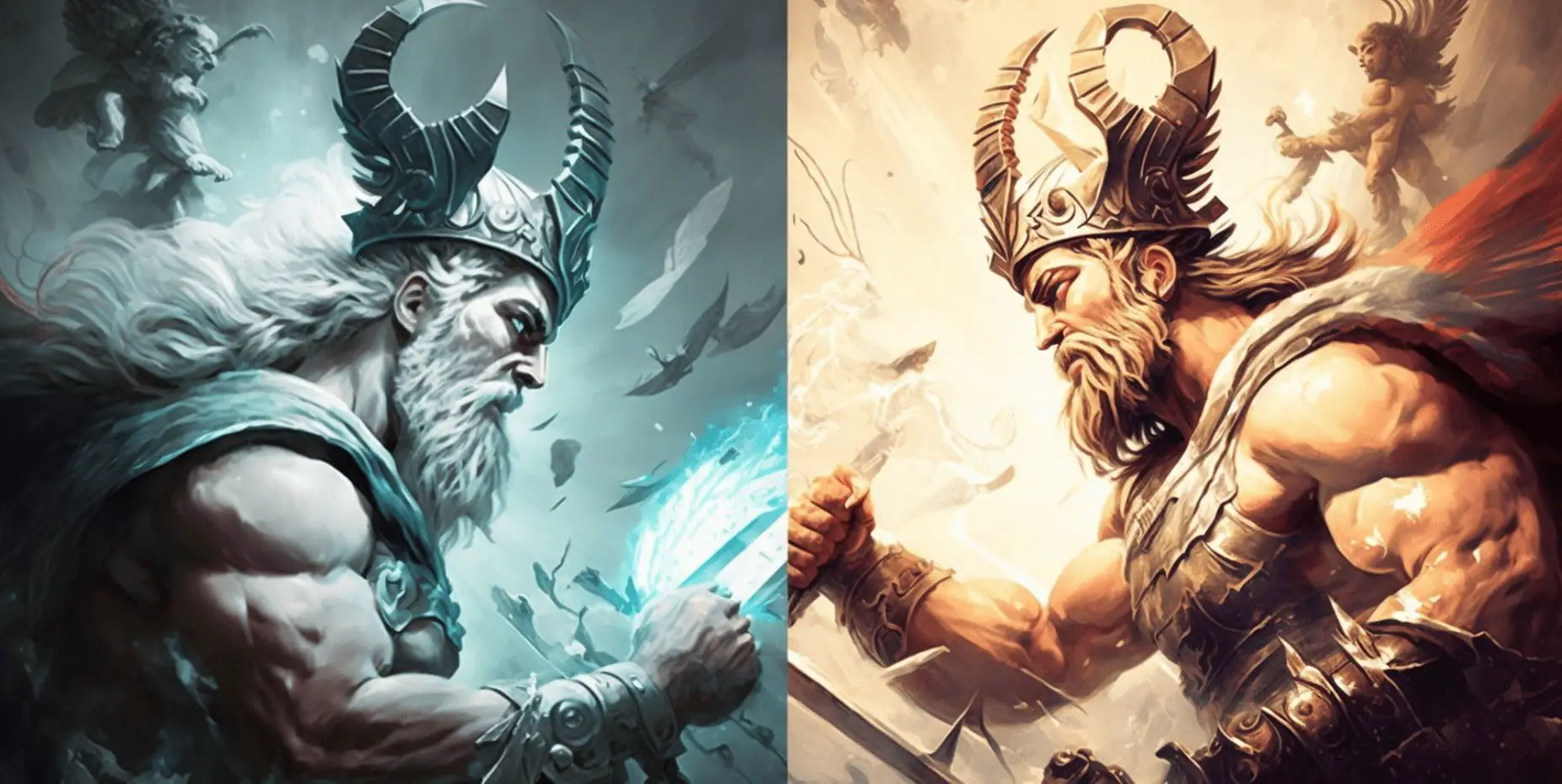This content discusses the strengths and weaknesses of mythological beings from different cultures. It explores Greek mythology, discussing Zeus’ strength in controlling lightning and his weakness in arrogance and love affairs, as well as Medusa’s ability to turn people to stone but vulnerability to her own reflection. It also explores Norse mythology, discussing Thor’s strength with thunder and his weakness in arrogance, and Fenrir’s strength and size but uncontrollable rage. Lastly, it discusses Egyptian mythology, discussing Ra’s ultimate power but vulnerability to aging, and Anubis’ strength over death but vulnerability to betrayal. The content concludes by reflecting on the diversity and fascination of these mythological beings.
Clash of Titans: Comparing the Strengths and Weaknesses of Mythological Beings from Different Cultures
Introduction
Throughout human history, different cultures have created intricate mythologies filled with powerful beings. These mythological creatures embody extraordinary strengths and possess remarkable weaknesses. This article aims to explore and compare the strengths and weaknesses of mythological beings from various cultures worldwide.
Greek Mythology
Zeus – King of the Gods
Zeus, the ruler of Mount Olympus in Greek mythology, stood as the most powerful god. His strength lay in his ability to control thunder and lightning, making him virtually invincible during battles. However, his weakness was his arrogance and numerous love affairs, leading to conflicts and the rise of vengeful beings.
Medusa – The Gorgon
Medusa, a Gorgon monster with snakes for hair, was a formidable creature. Her ability to turn anyone who looked into her eyes to stone made her a fearsome foe. However, her weakness resided in her vulnerability to her own reflection. Looking into a mirror would cause her to turn into stone, rendering her powerless.
Norse Mythology
Thor – God of Thunder
Thor, the hammer-wielding god in Norse mythology, possessed immense strength that allowed him to control thunder and lightning. Armed with his hammer Mjolnir, he was invincible in battles against giants and other mythical creatures. However, his weakness lay in his arrogance and impulsive nature, often leading to unforeseen consequences.
Fenrir – The Giant Wolf
Fenrir, a monstrous wolf in Norse mythology, boasted unparalleled strength and size. His jaws could crush any opponent, and his ferocity was unmatched. Nevertheless, his weakness was his uncontrollable rage. If he ever broke free from his chains, he would bring destruction upon the gods and the world.
Egyptian Mythology
Ra – The Sun God
Ra, the Egyptian sun god, represented the ultimate power and strength. As the sun rose and set, Ra controlled the cycle of life and death. His weakness resided in his aging process. Over time, his strength would diminish, leaving him vulnerable to his enemies.
Anubis – The God of the Dead
Anubis, the jackal-headed god in Egyptian mythology, had incredible strength over death and the afterlife. He guided souls to the underworld and weighed them against the feather of Ma’at. However, his weakness was his vulnerability to betrayal and manipulation by other gods.
Conclusion
Mythological beings from different cultures possess captivating strengths and weaknesses that shape their tales and influence their interactions within their respective mythologies. These stories reflect the rich diversity of human imagination, offering us insight into our ancestors’ beliefs, fears, and desires. Regardless of their strengths or weaknesses, these mythological beings continue to captivate and inspire our fascination with the supernatural.
